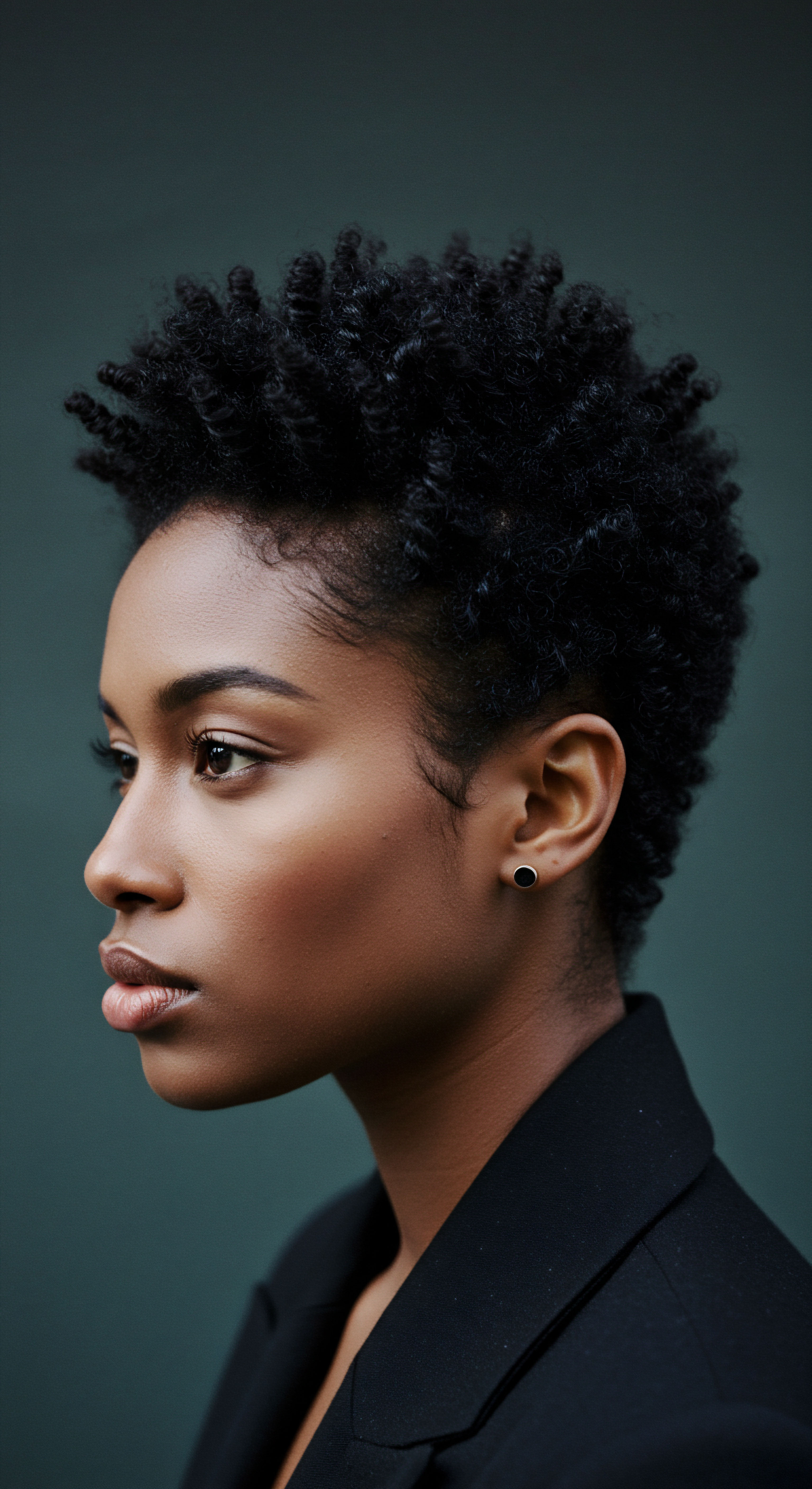
Roots
Consider for a moment the quiet intimacy of our nighttime rituals, particularly those woven around the preservation of our textured strands. There is a gentle, almost unspoken understanding among those who wear their crowns in coils and kinks ❉ the bonnet, a soft sentinel of sleep, stands guard over precious moisture and delicate curl patterns. Yet, beneath this comforting layer, an unseen world hums with life—the microscopic landscape of our scalp.
Could this very act of nightly protection, a tradition passed through generations, subtly alter the delicate equilibrium of that unseen world? This initial exploration seeks to ground our understanding in the very essence of scalp health, before venturing into the more complex interplay of care practices and biological responses.
Our scalp, far from being a mere foundation for hair, constitutes a vibrant ecosystem. It hosts a diverse community of microorganisms—bacteria, fungi, and even tiny mites—all coexisting in a delicate balance. This collection, known as the scalp microbiome, plays a significant part in maintaining the skin barrier, modulating immune responses, and even influencing the health of our hair follicles.
A healthy microbiome is often characterized by a rich diversity of species, where no single type overwhelmingly dominates. When this balance shifts, even slightly, it can set the stage for a range of scalp concerns, from mild irritation to more persistent conditions.
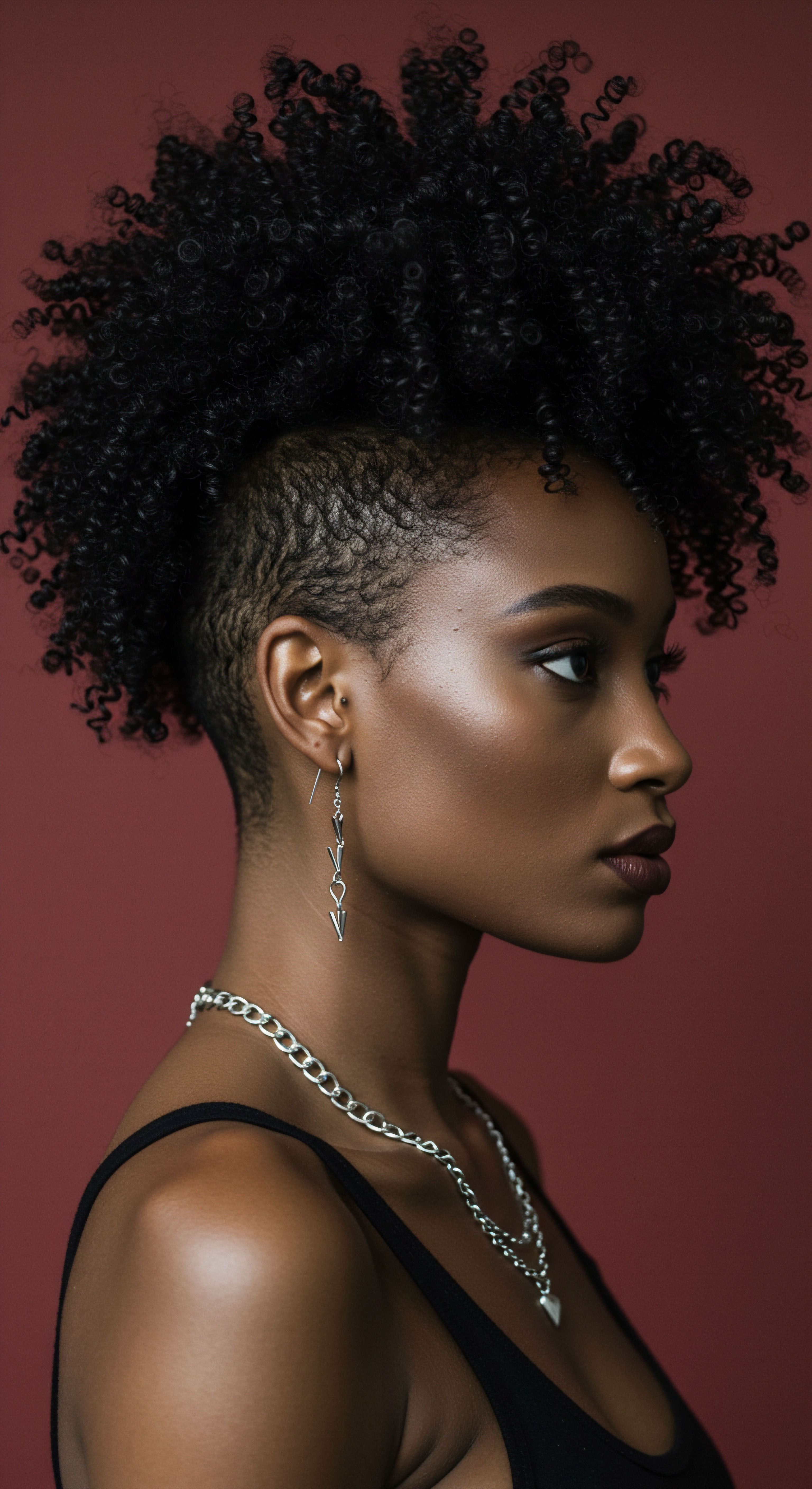
The Scalp’s Living Surface
The skin on our scalp, like skin elsewhere on the body, provides a physical barrier against external aggressors. It is rich in sebaceous glands, which secrete sebum, a natural oil that lubricates both the skin and hair. Sebum, along with sweat and dead skin cells, forms a nutrient-rich environment for the resident microbial community.
The pH of the scalp, typically slightly acidic (around 4.5 to 5.5), also influences which microorganisms thrive. This acidic mantle helps deter the growth of many pathogenic bacteria and fungi, acting as a first line of defense.
Understanding the fundamental biology of the scalp provides a lens through which to view the impact of external factors. Our hair follicles, deeply rooted within this skin, are dynamic structures, undergoing cycles of growth, rest, and shedding. The health of these follicles is intrinsically linked to the surrounding microenvironment. Any disruption to the scalp’s protective barrier or its microbial harmony can have ripple effects, potentially affecting hair growth and overall strand vitality.
The scalp’s unseen microbial community, a vibrant ecosystem, maintains a delicate balance crucial for hair health.

Hair Anatomy and the Scalp’s Interconnectedness
Textured hair, with its unique curl patterns and structural variations, often requires particular attention to moisture retention. The natural bends and twists in the hair shaft can make it more prone to dryness, as sebum struggles to travel down the length of the strand. This inherent characteristic often leads individuals to seek methods for preserving moisture, with bonnets standing as a cherished solution. Yet, the interaction between the hair itself, the scalp, and any covering becomes a point of deep consideration.
- Sebum production ❉ Natural oils from glands on the scalp create a nourishing environment for resident microbes.
- Skin Barrier function ❉ The scalp’s surface provides protection against external elements.
- Follicle health ❉ The hair’s anchor points are deeply influenced by the surrounding microenvironment.
The question of bonnets and microbial balance, then, begins not with an assumption of detriment, but with a grounded inquiry into the very nature of our scalp’s living surface and the ways in which our care practices interact with its fundamental biology. It invites us to observe, to learn, and to adapt our rituals with deeper awareness.
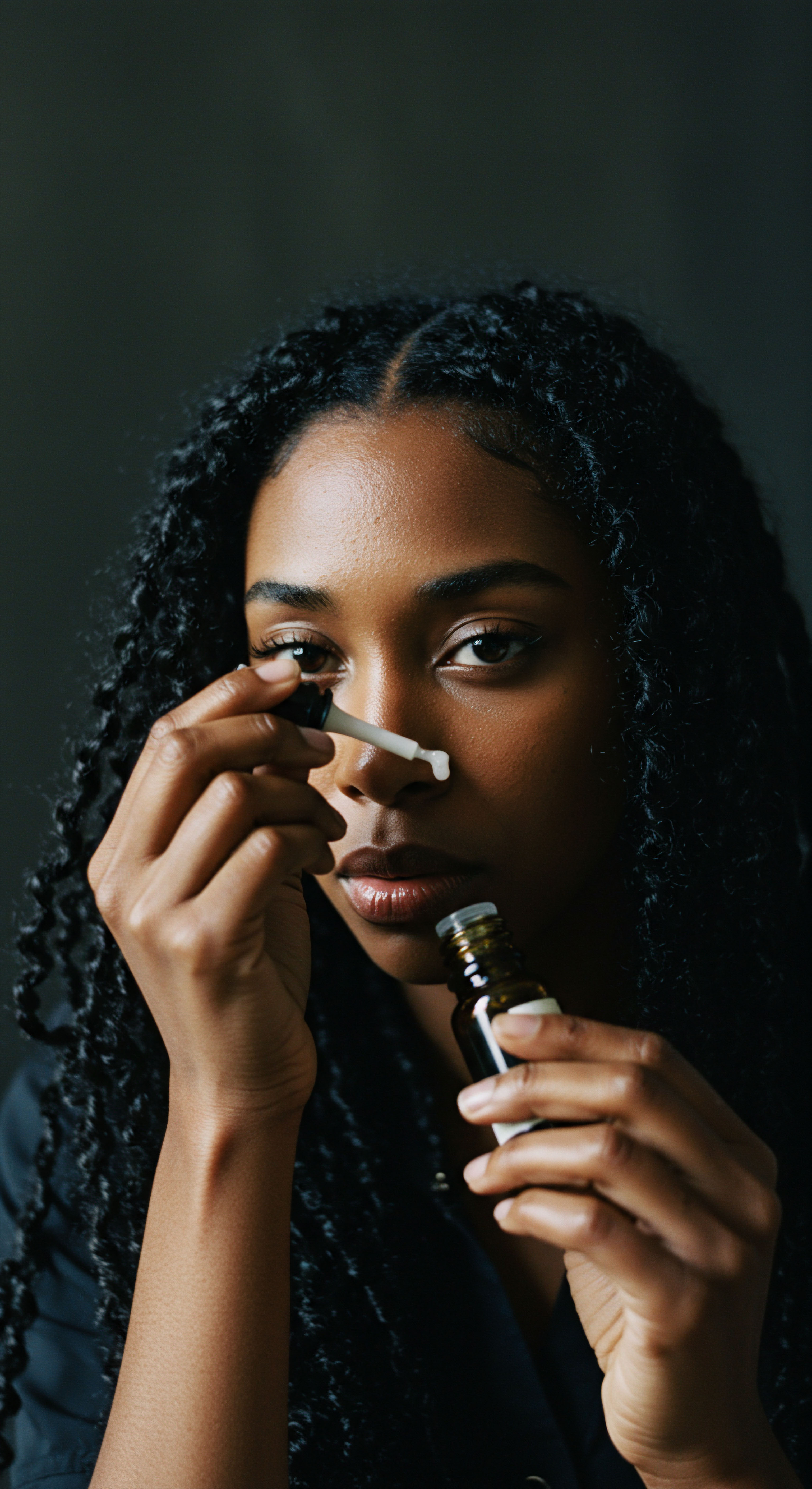
Ritual
Stepping from the foundational understanding of our scalp’s inner workings, we turn now to the daily and nightly rhythms that shape our hair care. The bonnet, a quiet companion in countless textured hair journeys, represents a significant part of these routines. It promises a haven for our strands, safeguarding them from friction, preserving moisture, and maintaining style definition. But as with any practice, even the most cherished, a thoughtful examination of its consistent application becomes prudent.
Does the very act of creating this protective cocoon, night after night, inadvertently alter the nuanced environment of the scalp beneath? This section delves into the practical aspects of bonnet usage, exploring its intended benefits alongside the potential shifts it might introduce to our scalp’s microbial landscape.
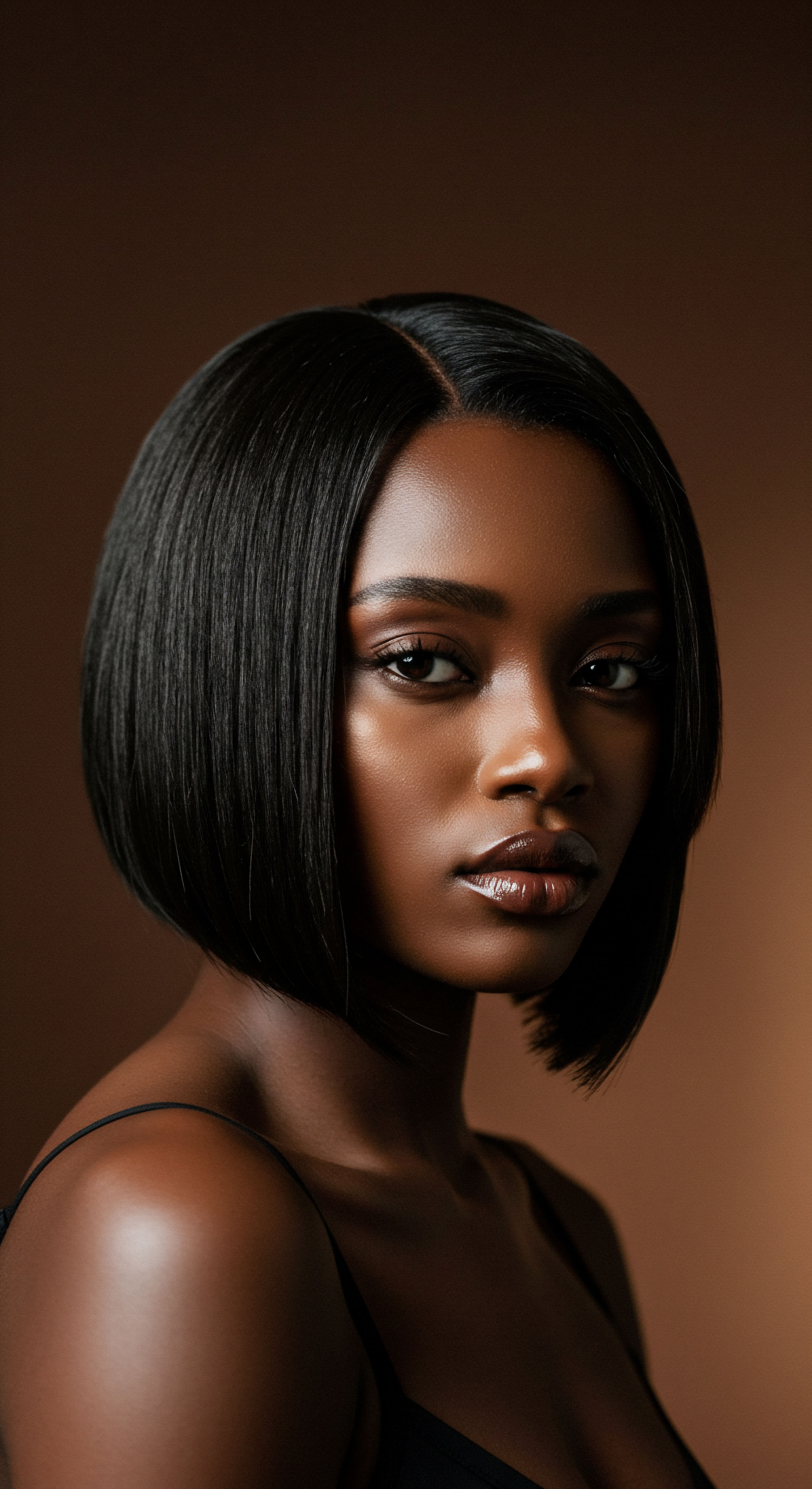
The Bonnet’s Role in Hair Preservation
For generations, the bonnet has been a cornerstone of nighttime hair care for those with textured hair. Its smooth, often satin or silk, interior reduces friction against pillows, which can otherwise lead to breakage, frizz, and tangles. This protective shield helps maintain the hair’s natural moisture, preventing it from being absorbed by absorbent fabrics like cotton.
For many, waking up to defined curls and fewer knots is a tangible benefit that underscores the bonnet’s value. It allows styles to last longer, reducing the need for frequent manipulation, which in itself contributes to hair health.
However, the very properties that make bonnets effective—their ability to create a contained, less evaporative environment—also warrant closer inspection when considering the scalp. A consistent covering can lead to increased warmth and humidity directly against the scalp. This microclimate, while beneficial for hair moisture, could potentially alter the conditions favorable to certain microbial populations.

Maintaining Scalp Freshness While Bonnet Wearing
The interaction between bonnet use and scalp environment is not a simple matter of good or bad; rather, it hinges on how the practice is integrated into an overall care regimen. Consider the natural processes occurring on the scalp ❉ sebum production, perspiration, and the shedding of dead skin cells. When a bonnet is worn for extended periods, especially during sleep, these natural secretions are contained. If not addressed through regular cleansing, this accumulation, combined with warmth and humidity, could theoretically create a more hospitable environment for certain microorganisms to proliferate.
The bonnet, a cherished tool for hair preservation, creates a microclimate that requires mindful scalp care.
The key to harmonious bonnet use lies in conscious scalp hygiene. This includes regular, yet gentle, cleansing to remove buildup of sebum, sweat, and product residue. The frequency of washing will vary depending on individual scalp oiliness, activity levels, and product usage.
Some individuals might find that a co-wash or a lighter shampoo suffices between deeper cleansing sessions. The choice of cleansing agents also plays a part; formulations that respect the scalp’s natural pH and do not strip it excessively are often beneficial.
Beyond cleansing, allowing the scalp to breathe and air out periodically is also a sensible practice. This might involve periods during the day when the hair is not covered, or ensuring the bonnet itself is clean and breathable. The material of the bonnet, while primarily chosen for its smoothness, can also play a minor role in breathability.
| Material Satin |
| Hair Benefit Reduces friction, retains moisture. |
| Scalp Climate Potential Good, relatively breathable. |
| Material Silk |
| Hair Benefit Superior friction reduction, excellent moisture retention. |
| Scalp Climate Potential Very good, natural breathability. |
| Material Cotton (often as lining) |
| Hair Benefit Absorbent, less friction reduction. |
| Scalp Climate Potential Can absorb scalp moisture, less ideal for sustained use. |
| Material Smooth materials generally prioritize hair health; breathability matters for scalp. |
The ritual of wearing a bonnet, therefore, is not isolated from the broader context of scalp care. It invites a reciprocal relationship ❉ the bonnet protects the hair, and in return, the scalp asks for attentive cleansing and airing. This balanced approach ensures that the benefits to our strands do not come at the expense of our scalp’s well-being.
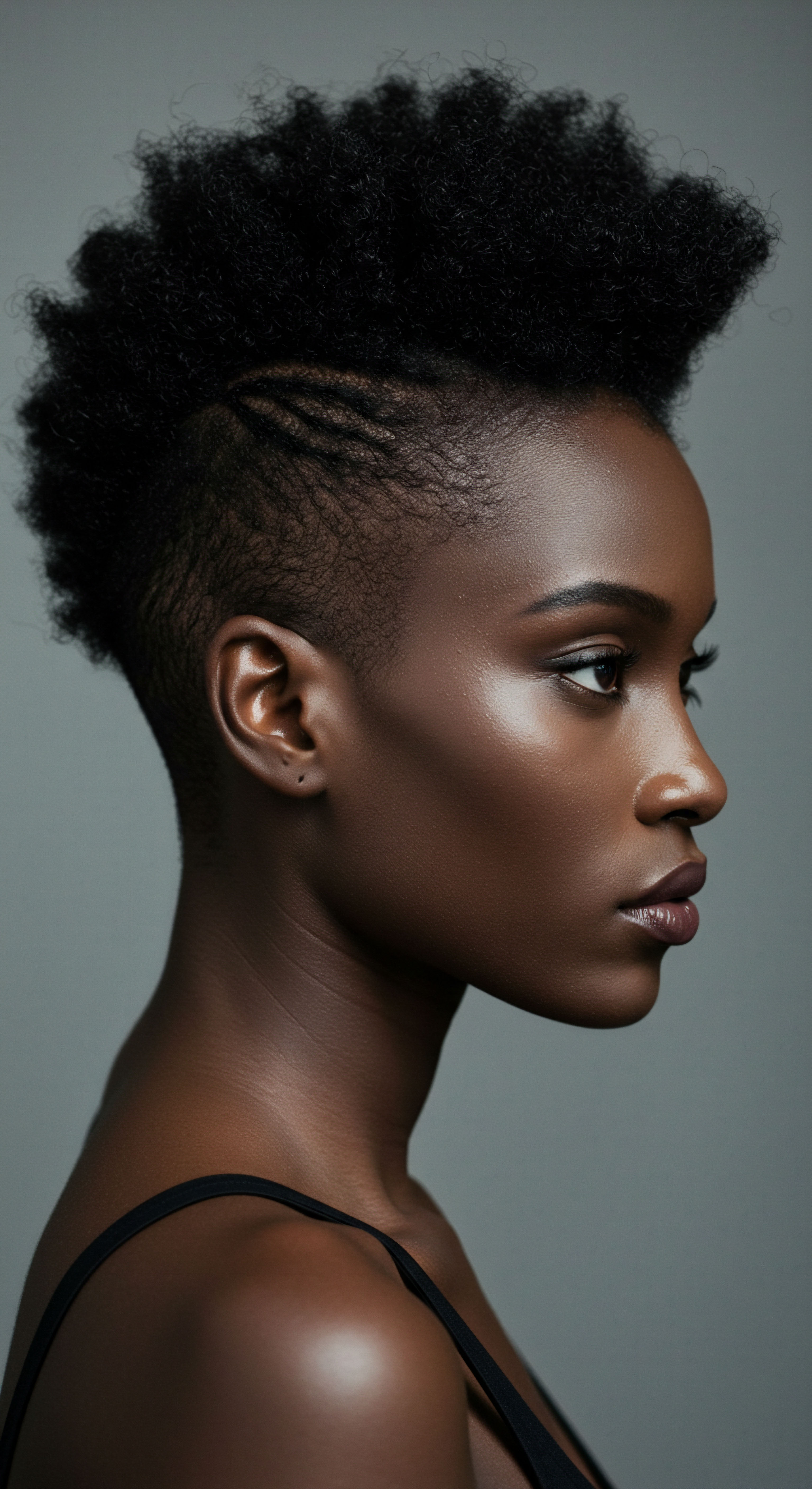
Relay
Moving beyond the observable practices and into the realm of subtle biological shifts, we confront the deepest dimensions of our initial inquiry ❉ Can consistent bonnet wear truly influence the intricate microbial balance of the scalp? This line of questioning leads us into the nuanced interplay of environmental factors, individual predispositions, and the specific biology of our scalp’s unseen residents. Here, we consider not just the surface-level effects, but the profound, interconnected systems at play, drawing upon scientific understanding and the lived experiences of those with textured hair.

Does Occlusion Affect Scalp Microbial Diversity?
The concept of occlusion, or covering, is well-studied in dermatology for its effects on skin. When an area of skin is covered, it typically experiences an increase in temperature and humidity, along with a reduction in air circulation. These conditions can alter the microenvironment, potentially favoring the growth of certain microorganisms over others.
On the scalp, this might mean a shift in the delicate balance of bacteria and fungi that normally coexist. For instance, some studies on skin microbiology have shown that occlusive dressings can lead to an increase in anaerobic bacteria, which thrive in low-oxygen environments, and a decrease in the diversity of aerobic bacteria.
Consider a particular investigation that examined the scalp microbiome in different populations. A study published in the journal Applied and Environmental Microbiology explored the scalp microbial community in individuals from various regions, including those with different hair care practices. While not directly focusing on bonnets, this research highlighted the significant influence of environmental factors and hygiene habits on the composition of the scalp microbiota. It revealed that shifts in scalp pH and sebum levels, both of which can be influenced by consistent covering, were associated with changes in bacterial and fungal populations.
Specifically, an overgrowth of certain yeast species, such as Malassezia, which is a common inhabitant of the scalp, can be linked to conditions like seborrheic dermatitis. Malassezia thrives in lipid-rich, warm, and humid environments. While a bonnet’s use is distinct from a medical occlusive dressing, the principle of creating a microclimate remains. The study underscored that frequent washing practices, or the lack thereof, could significantly alter the microbial landscape, affecting the prevalence of various bacteria and fungi on the scalp. This suggests that the consistent, prolonged use of a bonnet, by creating a warmer, more humid environment, could potentially contribute to conditions where such lipid-loving yeasts might proliferate if not balanced by adequate cleansing and airing.

How Does Scalp Microclimate Influence Fungal Growth?
The fungi on our scalp, particularly species of Malassezia, are lipophilic, meaning they feed on lipids (oils). Our sebaceous glands provide a constant supply of these lipids. When a bonnet is worn for many hours, particularly overnight, it can create a localized increase in temperature and humidity.
This altered microclimate may provide optimal conditions for Malassezia to grow beyond its typical commensal levels. An overgrowth of this yeast can lead to symptoms such as itching, flaking, and redness, commonly associated with seborrheic dermatitis.
However, it is crucial to understand that the presence of Malassezia is normal. The issue arises when its population becomes unbalanced. This imbalance is often triggered by a combination of factors, not solely by bonnet use.
Genetic predisposition, stress, dietary habits, and underlying immune responses all play a part. The bonnet, then, might be considered a contributing environmental factor that, in certain individuals, could tip the scales if not managed with appropriate scalp care.
Consistent bonnet wear, by creating a warm, humid scalp microclimate, may influence the proliferation of certain scalp microbes like Malassezia.

Can Consistent Bonnet Wear Affect Scalp Health Indicators?
Beyond microbial populations, other scalp health indicators might be affected. The pH of the scalp, as discussed earlier, is a critical factor in maintaining a healthy environment. Prolonged occlusion might slightly alter the pH, making it more alkaline, which could favor the growth of less desirable bacteria. Furthermore, the constant containment of sweat and sebum, without regular exposure to air, could lead to a buildup that might clog pores or hair follicles, potentially contributing to conditions like folliculitis.
Consider the role of individual variability. Not everyone will experience scalp issues from consistent bonnet wear. Factors such as individual sebum production rates, the specific composition of one’s existing microbiome, genetic predispositions to certain scalp conditions, and the frequency and thoroughness of cleansing routines all contribute to the overall outcome. For someone with a naturally oily scalp, the effect of occlusion might be more pronounced than for someone with a drier scalp.
The conversation around bonnets and scalp health, therefore, extends beyond a simple yes or no. It requires a thoughtful consideration of individual scalp characteristics, the specific duration and frequency of bonnet use, and the complementary scalp care practices in place. It invites us to listen to our scalp, observing its unique responses, and adjusting our rituals to support its intrinsic balance. The aim is not to abandon a cherished protective practice, but to refine it with deeper biological awareness.
- Microbial shifts ❉ Changes in scalp temperature and humidity can alter the balance of bacteria and fungi.
- Malassezia proliferation ❉ Warm, lipid-rich environments can favor the growth of this common scalp yeast.
- PH alterations ❉ Occlusion might subtly shift the scalp’s acidic mantle, affecting microbial equilibrium.
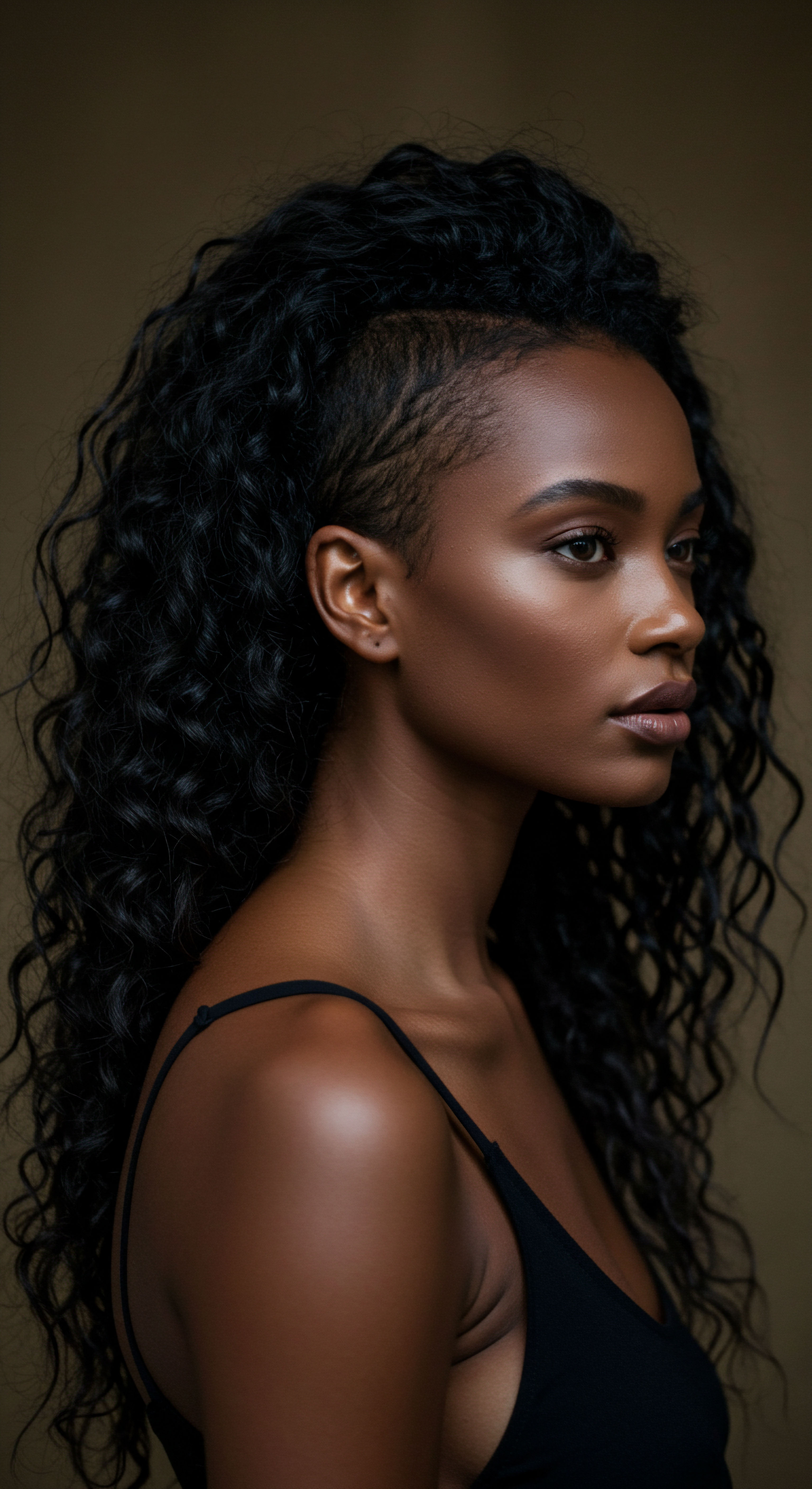
Reflection
Our exploration of bonnets and the delicate balance of the scalp’s microbial world draws to a close, yet the conversation itself feels open-ended, much like the continuous dance of life on our skin. We began by acknowledging the deep roots of our hair care practices, moved through the rituals that shape our daily lives, and then journeyed into the subtle scientific interplay of environment and biology. What remains is a sense of thoughtful consideration, a gentle reminder that every aspect of our self-care, even the seemingly simple act of donning a bonnet, carries a ripple of consequence within our own intricate ecosystems. The wisdom lies not in definitive pronouncements, but in the ongoing invitation to observe, to understand, and to tend to our bodies with a profound respect for their inherent complexities.
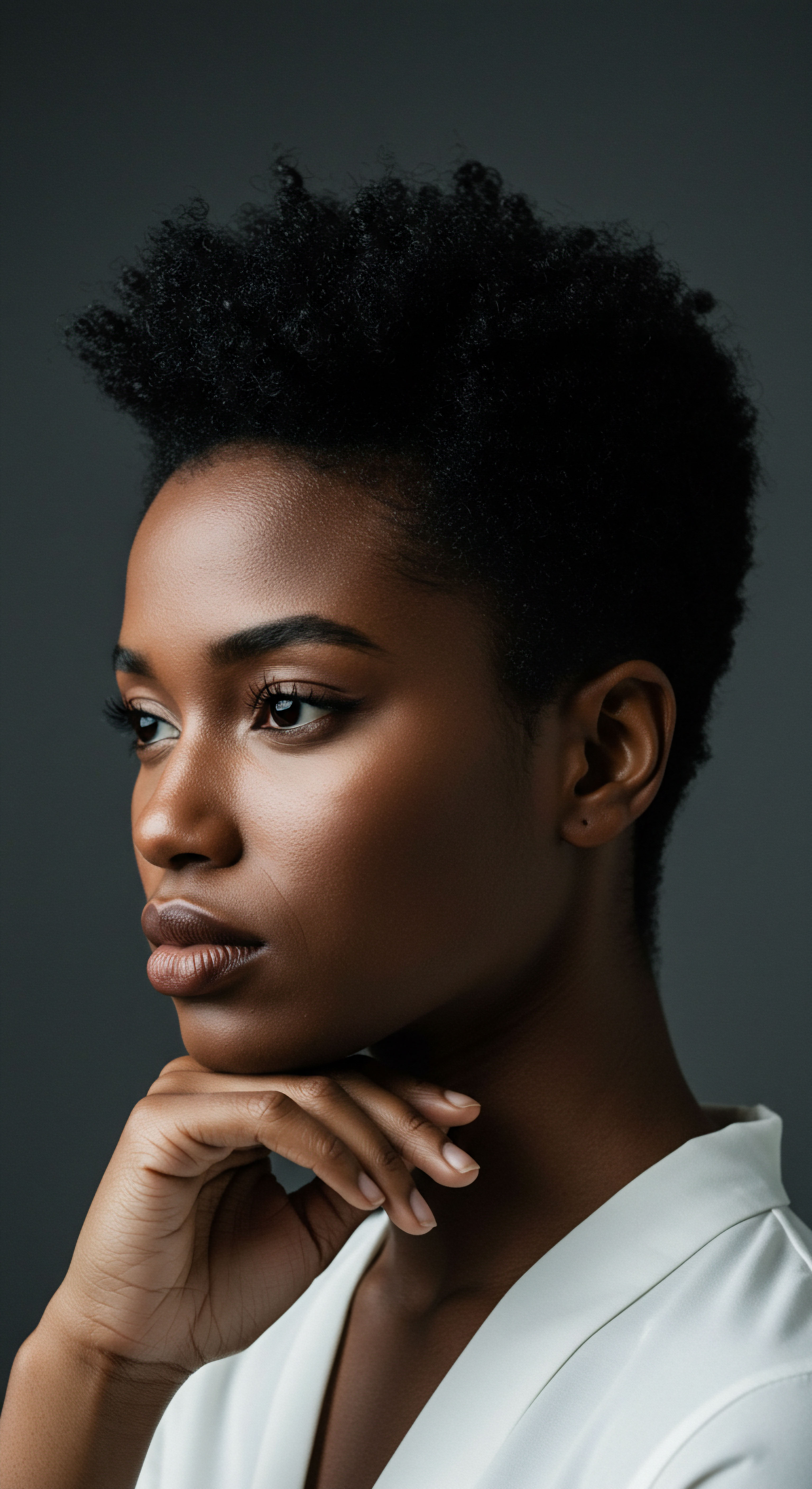
References
- Chen, L. et al. (2018). The Scalp Microbiome in Health and Disease. Applied and Environmental Microbiology, 84(21), e01371-18.
- Xu, Z. et al. (2016). Dandruff Is Associated with the Disturbance of the Population Structure of Malassezia on the Scalp. Scientific Reports, 6, 24877.
- Dawson, T. L. (2007). Malassezia globosa and restricta ❉ Breakthroughs in the Understanding of Dandruff. Journal of Investigative Dermatology Symposium Proceedings, 12(1), 15-19.
- Rebora, A. (2007). The Hair Follicle and Its Microenvironment. Dermatologic Clinics, 25(2), 173-181.
- Prohaska, T. R. & Clark, D. O. (2002). The Human Microbiome ❉ A Medical Perspective. Springer.
- O’Toole, G. A. et al. (2000). Biofilm Formation as a Microbial Lifestyle. Annual Review of Microbiology, 54, 49-79.
- Goldsmith, L. A. et al. (2012). Fitzpatrick’s Dermatology in General Medicine (8th ed.). McGraw-Hill Education. (Chapters on Hair and Scalp Disorders, Skin Microbiology)